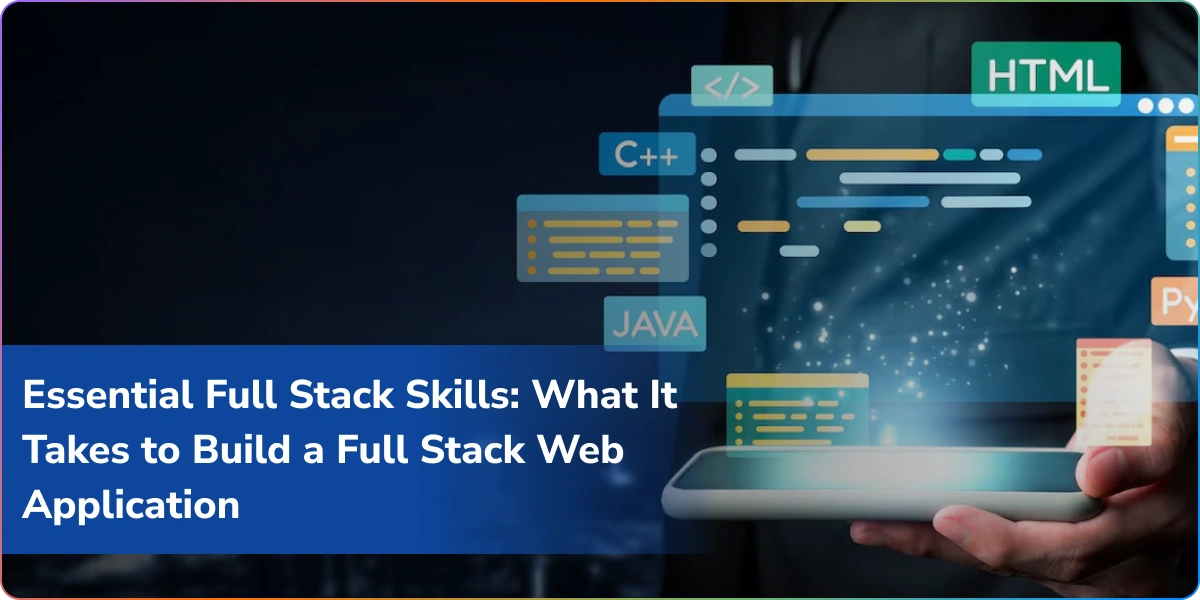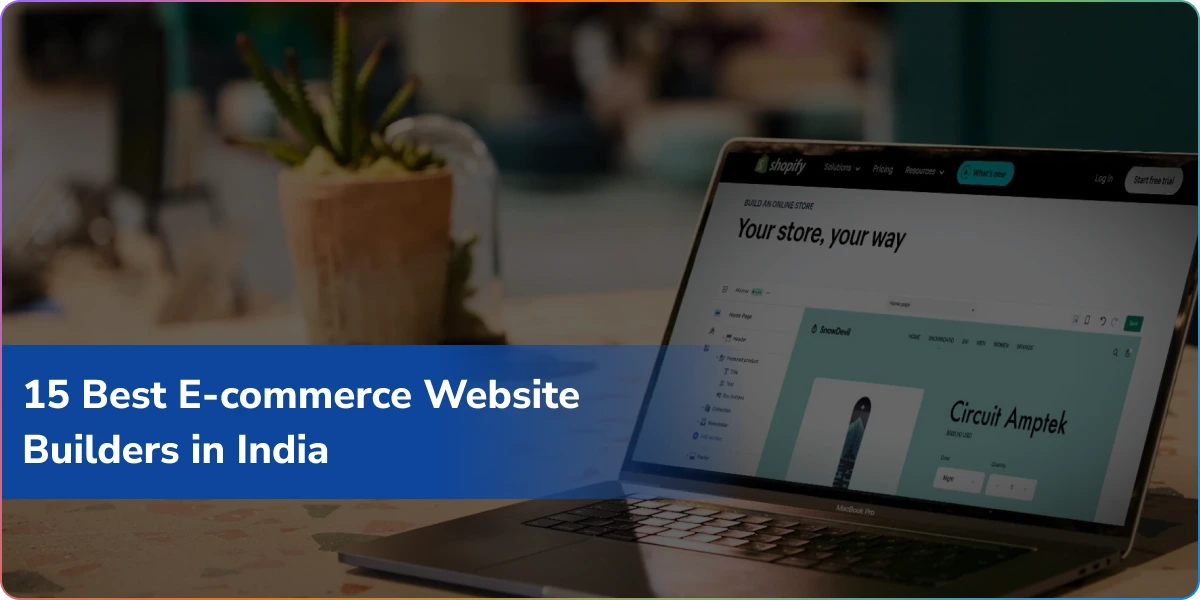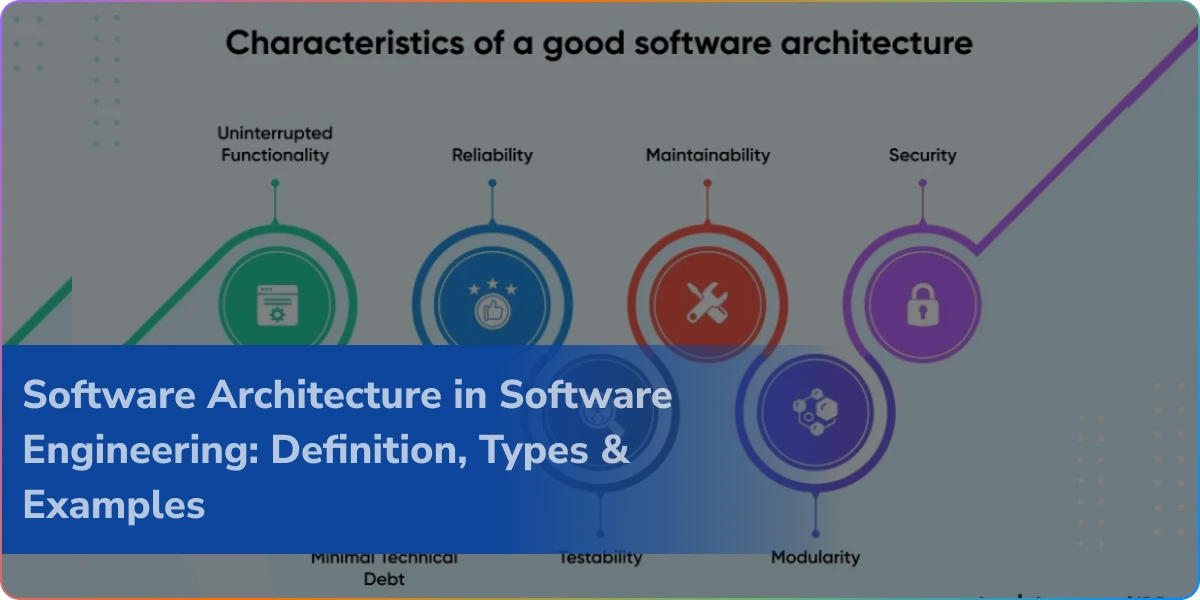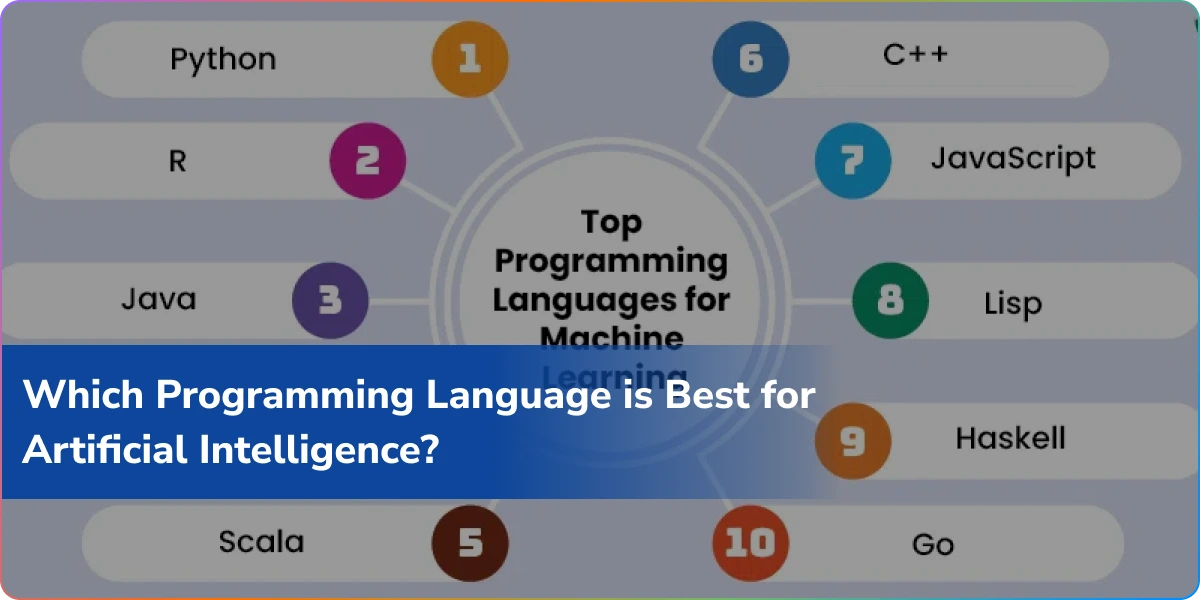In the current ever-evolving world where with every innovation, one needs to upgrade their skills with the latest trends, the need for versatile candidates is on the rise. Businesses are prioritizing versatility as a core factor and hence are more inclined towards hiring developers who can manage both client-side and server-side development seamlessly. That’s where a fullstack web developer comes into the picture. These are professionals who build dynamic, data-driven applications from scratch to core using a diverse range of tools and technologies.
Be it a business owner planning to launch a new platform or an aspiring developer aiming to level up, acing the right full stack skills is non-negotiable.
In this detailed guide, we’ll take you through the key technologies, tools, development stages, and best practices involved in creating a reliable and scalable full-stack web application.
What is a Full Stack Application?
It is a web application that handles both the user-facing interface (frontend) and the behind-the-scenes logic (backend). It encompasses everything from the layout and design of the app to the business logic, server infrastructure, APIs, and databases.
Here’s a detail about what’s typically involved:
- Frontend (Client-Side): To create the user interface, technologies like HTML, CSS, JavaScript, React, or Angular are used.
- Backend (Server-Side): Developers use programming logic and server-side scripting using Node.js, Python, Java, PHP, etc.
- Database Layer: Handling data with relational (MySQL, PostgreSQL) or NoSQL (MongoDB, Firebase) databases.
- Deployment: This includes hosting and running the app on cloud platforms like AWS, Heroku, or Azure.
A fullstack web developer possesses the skills to work across these layers, often switching between frontend and backend tasks as needed.
Core Full Stack Technologies
It is vital to understand the foundational full stack technologies to build seamless and scalable applications. These tools usually vary based on project requirements, but the following are some of the most commonly used technologies by category:
Front-End Technologies
- HTML & CSS: These are the fundamental building blocks for structure and style.
- JavaScript (ES6+): It is the core language for dynamic web experiences.
- Frameworks: React.js, Angular, Vue.js – for building component-based UIs.
- Design Tools: Tailwind CSS, Bootstrap, Figma (for prototyping and responsive design).
Back-End Technologies
- Node.js + Express: These technologies are suitable for scalable network applications using JavaScript on the backend.
- Django (Python): A high-level framework with batteries included.
- Spring Boot (Java): It is often used by a Java full stack developer for robust enterprise-level apps.
- RESTful APIs & GraphQL: Generally utilized for communication between the frontend and the backend.
Databases
- SQL Databases: Developers should use PostgreSQL, MySQL, which are great for structured data.
- NoSQL Databases: MongoDB, Firebase, these make the best choice for flexible, scalable data models.
DevOps & Deployment
- Git & GitHub: Most preferred for version control and collaboration.
- Docker, Kubernetes: Used for containerization and orchestration for consistent deployment.
- CI/CD Tools: Jenkins, GitHub Actions, and Travis CI help in automating your build and deployment pipelines.
Learning to master these full stack technologies empowers developers to create robust and reliable web solutions that perform well under real-world conditions.
Types of Full Stack Developer
Though the tech stack might be common among full-stack developers but not all of them use the same tools or work on similar kinds of projects. Let’s now understand different types of full stack developer roles based on technology stacks and industry applications:
1. MERN Stack Developer
- Tools: MongoDB, Express.js, React.js, Node.js.
- Use Case: Single Page Applications (SPAs), dashboards, social apps.
2. MEAN Stack Developer
- Tools: MongoDB, Express.js, Angular, Node.js.
- Use Case: Enterprise apps, performance-heavy platforms.
3. LAMP Stack Developer
- Tools: Linux, Apache, MySQL, PHP.
- Use Case: Content management systems (like WordPress), legacy systems.
4. Java Full Stack Developer
- Tools: Java, Spring Boot, Hibernate, Angular/React.
- Use Case: Banking systems, corporate intranet portals, B2B platforms.
5. Python Full Stack Developer
- Tools: Python, Django/Flask, React/Vue.
- Use Case: Data-centric platforms, machine learning applications, SaaS tools.
Each role differs in its nature and specialization. Hence, when businesses hire full stack developer professionals, they often make decisions on the usage of the stack that best suits their application goals.
Want to hire an expert full stack developer for your upcoming project? Connect with Logixbuilt Solutions today.
Essential Skills Every Developer Must Master
The core of creating a successful web application is credited to the strong foundation of full stack skills. These skills include development, design, testing, and deployment.
Front-End Skills
- Expertise in HTML5, CSS3, and JavaScript (ES6+)
- Creating responsive design using Flexbox, Grid, or frameworks like Bootstrap
- Using React.js or Angular for component-based architecture
- Version control with Git
Back-End Skills
- Server-side scripting (Node.js, Python, or Java)
- RESTful API development
- Authentication using JWT or OAuth
- Middleware configuration for routing, caching, and validation
Database Knowledge
- Designing and managing schemas in MySQL/PostgreSQL
- Working with NoSQL databases like MongoDB
- Carrying out CRUD operations and data migrations
Deployment Skills
Setting up CI/CD pipelines
Managing cloud resources (AWS, Azure)
Creating Docker containers for consistent deployment
Soft Skills
- Agile methodology and team collaboration
- Problem-solving and debugging
- Time management and adaptability
An expert fullstack web developer is not only technically skilled but also understands the business logic and audience needs.
Testing Process in Full Stack Application Development
One of the most ignored yet crucial aspects in full-stack application development is the testing process. Testing ensures the application works smoothly and securely across all layers.
The following are the key stages:
Unit Testing
- Test individual components or functions (e.g., testing a login form).
- Tools: Jest, Mocha, JUnit (for Java full stack developer)
Integration Testing
- Verifying that the combined parts of the application work together.
End-to-End Testing
- Simulate real user behavior (clicks, form submissions, navigation).
- Tools: Selenium, Cypress, Playwright
Performance Testing
- Checking load times and responsiveness.
- Tools: Lighthouse, Apache JMeter
Security Testing
- Test for vulnerabilities like SQL injection, CSRF, and XSS.
- Tools: OWASP ZAP, Burp Suite
Following a well-designed testing process in full stack application development considerably minimizes bugs and ensures user trust.
Full Stack Web Application Checklist Before Release
It is vital to go through the full stack web application checklist before release of the app to find and resolve common issues early:
Functionality
- Getting all features tested and verified
- Validation on all forms and inputs
UI/UX
- Verifying Mobile responsiveness
- Checking on Clear navigation and visual hierarchy
Performance
- Assets minified and compressed
- Lazy loading for images and media
- Lighthouse score optimization
Security
- HTTPS enabled
- Data encryption in storage and transit
- Secure login and session management
SEO
- Page titles, Meta descriptions, and structured data
- Sitemap and robots.txt
- Fast page load times
Analytics
- Google Analytics or similar integrated
- Event tracking for key actions (clicks, form submissions)
Cross-checking through this full-stack web application parameters before release ensures your app is up to date, secure, and ready for real-world users.
When to Hire Full Stack Developer Experts
Businesses often face a dilemma on whether they onboard an internal team or hire full stack developer talent externally. This can be solved by keeping in mind the following:
- Startup Phase: If you’re in the startup phase, consider hiring one expert to handle both ends of development; this reduces cost and complexity.
- MVP Launch: Build a minimal product quickly to test the market.
- Maintenance & Updates: Add new features without a full-time team.
- Consulting: Plan tech architecture and roadmap with seasoned developers.
Whether you’re hiring a freelance full-stack web developer or a dedicated Java full stack developer, ensure they are well-versed in both technical and strategic aspects of full-stack development.
Conclusion
Building a successful full stack application requires a deep understanding of full stack technologies, a refined set of full stack skills, and a well-planned approach to development, testing, and deployment. Whether you’re planning to hire full stack developer talent or become one yourself, mastering these aspects will set you apart in today’s competitive digital landscape.
We at Logixbuilt Solutions offer talented full stack developers skilled in building every type of application and delivering results beyond your expectations. Connect with us today to discuss a fruitful project together!
FAQ
1. What are the key skills needed to be a full-stack developer?
A full-stack developer must have expertise in both frontend (HTML, CSS, JavaScript, frameworks such as React or Angular) and backend (Node.js, Python, PHP, etc.), as well as database management (SQL, MongoDB), version control (Git), and deployment skills.
2. Is full-stack development only about coding?
No, full-stack development also encompasses knowledge of UI/UX design, testing, security best practices, API integration, and DevOps tools for deployment and scaling.
3. Which programming languages are required for full-stack web development?
JavaScript is a must, usually paired with HTML, CSS, SQL, and a backend language such as Node.js, Python, Ruby, or PHP based on the tech stack.
4. How much time does it take to learn full-stack development?
It will generally take 6 months to one year of regular practice and learning to get job-ready, based on your background and preferred stack.
5. How can Logixbuilt Solutions help with full-stack web application development?
We develop full-stack applications from UI to backend, providing end-to-end solutions that suit your business.



